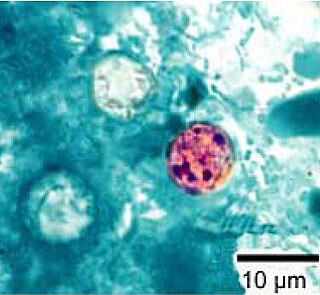Related Research Articles

A passerine is any bird of the order Passeriformes, which includes more than half of all bird species. Sometimes known as perching birds or songbirds, passerines are distinguished from other orders of birds by the arrangement of their toes, which facilitates perching.

The parrotbills are a group of peculiar birds native to East and Southeast Asia, though feral populations exist elsewhere. They are generally small, long-tailed birds which inhabit reedbeds and similar habitat. They feed mainly on seeds, e.g. of grasses, to which their bill, as the name implies, is well-adapted. Living in tropical to southern temperate climates, they are usually non-migratory.

Bowerbirds make up the bird family Ptilonorhynchidae. They are renowned for their unique courtship behaviour, where males build a structure and decorate it with sticks and brightly coloured objects in an attempt to attract a mate.

The grey wagtail is a member of the wagtail family, Motacillidae, measuring around 18–19 cm overall length. The species looks somewhat similar to the yellow wagtail but has the yellow on its underside restricted to the throat and vent. Breeding males have a black throat. The species is widely distributed, with several populations breeding in Eurosiberia and migrating to tropical regions in Asia and Africa. The species is always associated with running water when breeding, although they may use man-made structures near streams for the nest. Outside the breeding season, they may also be seen around lakes, coasts and other watery habitats. Like other wagtails, they frequently wag their tail and fly low with undulations and they have a sharp call that is often given in flight.

The garden warbler is a common and widespread small bird that breeds in most of Europe and in the Palearctic to western Siberia. It is a plain, long-winged and long-tailed typical warbler with brown upperparts and dull white underparts; the sexes are similar and juveniles resemble the adults. Its two subspecies differ only slightly and interbreed where their ranges overlap. Due to its lack of distinguishing features, this species can be confused with a number of other unstreaked warblers. The garden warbler's rich melodic song is similar to that of the blackcap, its closest relative, which competes with it for territory when nesting in the same woodland.

Isosporiasis, also known as cystoisosporiasis, is a human intestinal disease caused by the parasite Isospora belli. It is found worldwide, especially in tropical and subtropical areas. Infection often occurs in immuno-compromised individuals, notably AIDS patients, and outbreaks have been reported in institutionalized groups in the United States. The first documented case was in 1915. It is usually spread indirectly, normally through contaminated food or water (CDC.gov).

The anis are the three species of near-passerine birds in the genus Crotophaga of the cuckoo family. They are essentially tropical New World birds, although the range of two species just reaches the United States. Recent DNA evidence places them in the group Crotophaginae.
Isospora is a genus of internal parasites in the subclass Coccidia.

Sarcocystis is a genus of protozoan parasites, the majority of species infecting mammals, and some infecting reptiles and birds.

Piaya is a small genus of relatively large and long-tailed cuckoos, which occur in Mexico, Central America and South America. The two species in taxonomic order are:

The Eucoccidiorida are an order of microscopic, spore-forming, single-celled parasites belonging to the apicomplexan class Conoidasida. Protozoans of this order include parasites of humans, and both domesticated and wild animals including birds. Among these parasites are the Toxoplasma gondii that cause toxoplasmosis and Isospora belli, which results in isosporiasis.

The cuckoo-finch, also known as the parasitic weaver or cuckoo weaver, is a small passerine bird now placed in the family Viduidae with the indigobirds and whydahs. It occurs in grassland in Africa south of the Sahara. The male is mainly yellow and green while the female is buff with dark streaks. The eggs are laid in the nests of other birds.

Eimeriidae is a family of Apicomplexa. It contains the following genera:
Garnia is a genus of parasitic alveolates belonging to the phylum Apicomplexia.

Cyclospora is a genus of apicomplexan parasites. It includes the species Cyclospora cayetanensis, the causative agent of cyclosporiasis. Members of Cyclospora are characterized as having oocysts with two sporocysts, each containing two sporozoites.

Cystoisospora is a genus of parasitic alveolates belonging to the phylum Apicomplexa.
Atoxoplasma is a genus of parasitic alveolates in the phylum Apicomplexa. The species in this genus infect birds. They are spread by the orofaecal route.
Hyaloklossia is a genus of parasitic alveolates in the phylum Apicomplexa. Only one species in this genus is currently recognised - Hyaloklossia lieberkuehni.
Isospora sylviae is a species of internal parasite classified under Coccidia. It frequently occurs in the Eurasian blackcap and the garden warbler.
References
- ↑ Chapter 7: Isospora (Protista: Coccidiida) infection in migrating passerine birds Archived 2013-07-04 at the UK Government Web Archive in Dolnik (2003) pp. 71–80.